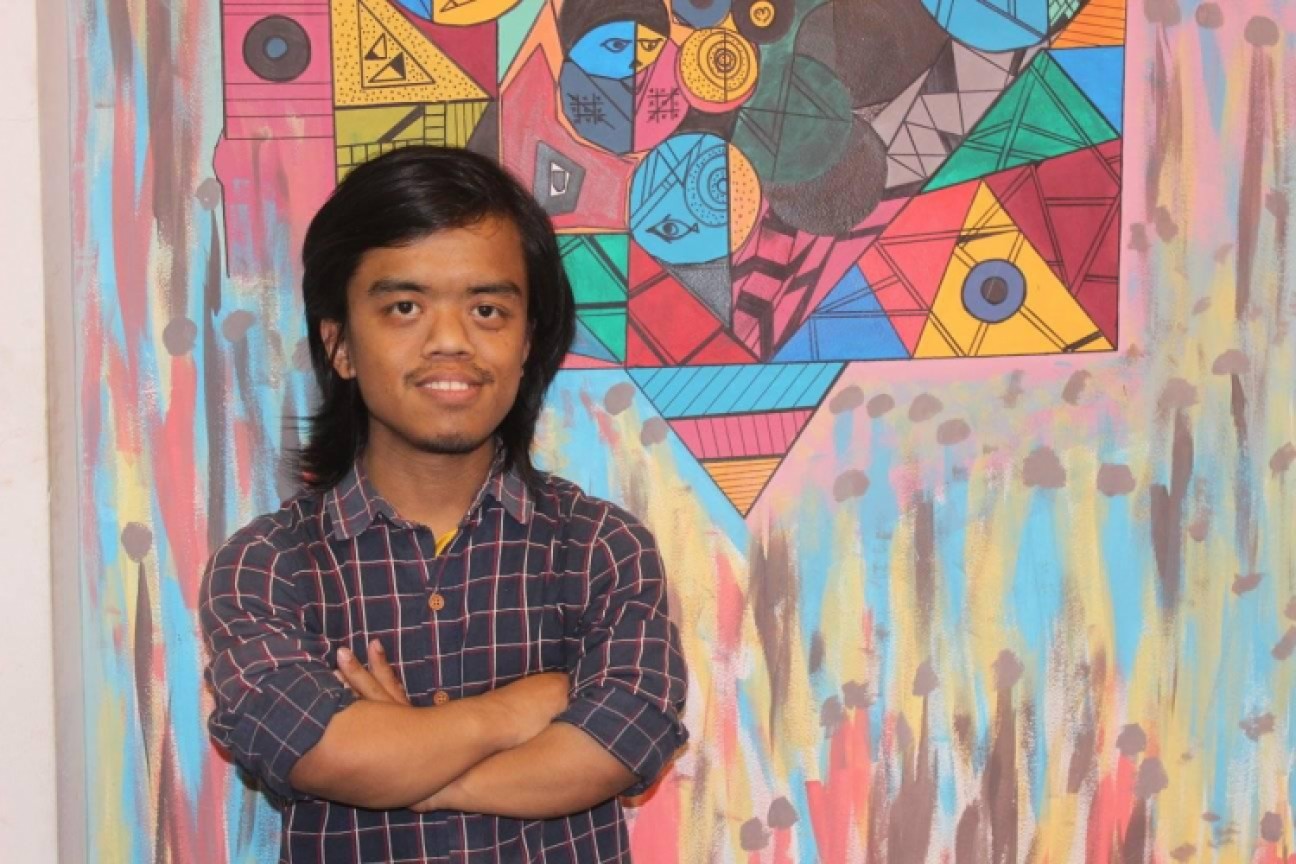When 15-year-old Swedish environmental activist Greta Thunberg protested outside the Swedish Parliament in 2018, holding a sign saying ‘School Strike for Climate’, few took her campaign seriously. But she continued to bunk school to raise climate change issues.
Three years on, 18-year-old Greta is now at the center of a global climate change campaign, which in turn is an inspiration for adolescents across the world. Only now have global political leaders started to heed the issues she raised and she has become a beacon of hope for the younger generations, hammering home the message that world leaders need to act to preserve the earth from the menace of climate change.
Back in 2019, United Nations Secretary-General, António Guterres, in a meeting with Greta, said, “My generation has largely failed until now to preserve both justices in the world and to preserve the planet. It is your generation that must make us accountable to make sure that we don't betray the future of humankind.”
The COP26 conference held in November 2021 in Glasgow, Scotland, recognized the youth as critical agents of change. Additionally, the conference encouraged governments around the world to include youths as a part of national delegations in climate conferences.
Some policy documents of the Nepal government have also recognized the youth’s role on climate change issues. Nepal’s climate change policy introduced in 2019 states that “youth human resources will be mobilized by developing their capacity for raising awareness about climate change.” The policy further says youth researchers will be encouraged in climate change-related research and studies. Moreover, it talks about forming and mobilizing youth volunteer committees for climate-induced disaster management.
Also read: ‘ApEx for climate’ Series | Nepal makes its case. But to what effect?
The Nationally Determined Contribution (NDC) presented by Nepal government in 2020 pledges to promote the leadership, participation, and negotiation capacity of women, indigenous peoples, and youth in climate change forums. The document talks about implementing the NDC through federal, provincial, and local governments, in collaboration with other relevant stakeholders including youth, women, and indigenous people.
International and national documents and frameworks have recognized the youth as an integral part of climate action. But what is the state of implementation? Are Nepali youths ready to contribute? What is the status of our youth’s participation in climate action?
According Radha Wagle, Joint secretary and head of Climate Division at the Ministry of Forest and Environment, youth involvement in climate-related policies and platforms is increasing but that is not enough. Wagle informs that four youths were inducted as members of the national delegation in the COP26 Summit. “We are also working on increasing the presence and contribution of youths in climate-related policy and implementation programs,” she adds.
Observers say young generations are not only at the receiving end of climate change but they can also play a vital role in addressing the issue. They can serve as agents of change and innovators in the action against climate. Over the past few decades, more and more youths are coming out to flag the issues of climate change.
Sagar Koirala, a youth climate activist, says the representation of Nepali youths in the climate change sector is low compared to other countries. “Only a few youths get to have their say in decision-making,” says Koirala. “No youth is consulted in major decision-making.” He says, as a youth climate activist, he wants to change this system and empower the youth. He stresses on the need for institutional mechanisms to empower a growing number of young people in climate action.
Also read: ‘ApEx for climate’ Series | Nepal in the middle of a climate crisis
At COP26, countries agreed to a new 10-year program of action on climate empowerment in order to promote youth engagement, climate education, and public participation. At the national level as well, the government should have policies to engage youths in all climate-related activities.
A few weeks back, ApEx had surveyed a random group of youths to gauge the level of their awareness about climate change. They had only a basic understanding of the issue.
In Nepal, youths began a systematic campaign on climate change only after 2008. There are now organizations advocating youth’s participation in climate action. For instance, the Nepalese Youth for Climate Action (NYCA), a youth-led coalition of the Nepali youths tackling climate change, was established in 2008 with a motto of ‘caring for climate change, caring for ourselves’. It has networks in various parts of the country.
Program Coordinator at Clean Energy Nepal, Lal Mani Wagle, who has worked as a youth climate activist, says there is much awareness on climate change among youths, at least in urban areas, compared to other areas of the environment. He says the government has recognized the youths who are working on climate change. “We can say youths have been contributing to climate action over the past decade,” says Wagle. “However, we are yet to systematize youth contributions in policy- and decision-making levels. It is a matter of satisfaction that government agencies are heeding youth suggestions.”
COP26 was not youth-inclusive
Prakriti Koirala

It had always been an ambition of mine to attend the Conference of Parties (COP) summit. Since elementary school, I had heard of the conference, procedures, and agreements. This year I got a chance to attend the COP26 in Glasgow, Scotland. I was lucky to have a party badge that allowed me access to all secret meetings.
From the perspective of a young person, the conference was not as youth-inclusive as we had expected. Fortunately, the participants representing the Nepali Ministry, CSOs, INGOs, NGOs, and youths as a whole worked well together. Nepali youths with party badges had the opportunity to participate in negotiations, while those with observer badges took part in various side events, sharing sessions, and the climate strike.
In my observation, youths from other countries, particularly in Africa, were leading their teams. They were in charge of preparing the drafts, negotiating with foreign governments, and attending various bilateral meetings. This impressed me and encouraged me to be well prepared, and made me realize that we as youths still have a lot of work. At the national level, many policies have addressed the voice of youths. However, we still have a long way to go in terms of involving youngsters in all aspects of climate change discussions and decision-making.
Koirala is a young climate activist
Youths are the most vulnerable group
Umesh Balal Magar

Climate change is an intergenerational problem caused by humans, mainly from the developed countries, and there is no silver bullet. Experts also say there is no science to cure the climate change problem but what we can certainly do is guide human behavior towards a more sustainable lifestyle.
Lack of political will is the main cause of climate change. Countries around the world are reluctant to implement solutions to combat the effects of climate change as they are too occupied with the goal of economic development, thereby increasing the emission of greenhouse gasses. That is exactly why we have failed for the 26th time to agree on a global solution at COP.
Also read: ‘ApEx for climate’ Series | How does Nepal get help in tackling climate change?
Nepal is one of the most vulnerable countries to climate change despite its small contribution to global CO2 emission. It has done some remarkable work on climate change mitigation policies. At COP26 in Glasgow, we stood firm in our commitment to net-zero emission and have prepared an exemplary NDC to remain steadfast towards that end.
Youths are the most vulnerable to climate change. In Nepal, we face all kinds of disaster threats like glacier lake outbursts, landslides and floods. Though youths are on the frontline of disasters, they are unlikely to make it to the policy-making table.
The Nepalese Youth for Climate Action (NYCA), a group of youth from all over the country, is working to protect Nepal and the Nepali people from adverse impacts of climate change by spreading awareness, advocating policies and taking action. We have been playing a key role in making Nepal more climate-resilient by leading adaptation efforts and through mitigation of GHGs since 2008. We work from local, national and international platforms for youth climate justice.
Magar is network coordinator, Nepalese Youth for Climate Action (NYCA)












